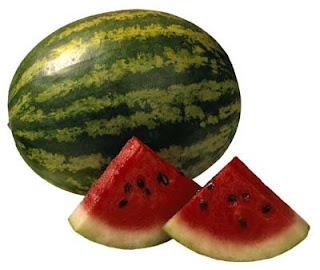 |
| Watermelon |
A research conducted by Bhimu Patil of Texas A&M University
Recently a research revealed that the watermelon flesh contains higher levels of the amino acid citrulline that surprised researchers of what they think. It is believed that most of the citrulline resides in the inedible peel of the fruit.
This discovery is very significant because the body converts citrulline into arginine, another amino acid that functions as a precursor to nitric oxide. Nitric oxide, in turn, plays a critical role in the dilation of blood vessels and the process of penile erection.
The functions primarily of some drugs like Viagra are to target the nitric oxide signaling pathway in the penis.
Bhimu Patil hopes that other researchers will begin to directly study watermelon's effects on erection. But they others are skeptical.
Just because nitric oxide is required for an erection, "that doesn't mean eating something that is rich in citrulline will make enough arginine that it will lead to better penile erections," said Irwin Goldstein, editor-in-chief of The Journal of Sexual Medicine and a former consultant for companies that make erectile dysfunction drugs.
"The vast majority of Americans produce enough arginine," he said. "Men with erectile dysfunction are not deficient in arginine."
Patil acknowledges that he doesn't know how much watermelon a man would need to eat to have an effect. Knowing that a four-ounce serving of watermelon contains approximately 150 milligrams of citrulline does not tell researchers what effects that much citrulline will have in the body, he said.
In a 2007 study, participants were able to increase their arginine levels 11 percent in three weeks by drinking three eight-ounce glasses of watermelon juice per day.





